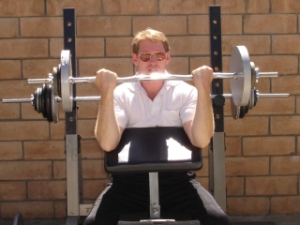Really Big News
The latest Scientific American had an article about one of the biggest news stories in tech history. It is by Bahram Jalali entitled "Making Silicon Lase". Once this little feat is perfected, we are well on our way to some very exciting new technologies. Real optical circuits replacing the electronic circuits used in computers now requires a laser that can be built right into the optronic chip. To do that, making silicon lase has always been the best possible choice (for what we know now anyway).
Making something lase is actually a simple process. All you have to do is pour in enough energy to raise the material to a population inversion where more of the material is at a higher energy state than is in a lower energy state to which it wants to fall thus creating the amplifying medium, keep it that way long enough for a feedback circuit (optical oscillator cavity, in this case) to build up a huge amplified wave and let some of that light escape in an amplified coherent beam.
The problems are all in the practical application namely in things like heat dissipation and the distribution of available energy levels that don't fit nicely into your useful energy level range. Silicon, for example, has a problem with momentum. The energy bands, upper and lower, which electrons are allowed to occupy, have peaks (for the lower) and valleys (for the upper) which don't have the same momentum. That means that the energy absorbed, being just adequate to raise an electron from a lower to a higher allowed energy level needs to coincide with a phonon (sound energy in the crystal which carries much more momentum)in order to make the transition for both energy and momentum to be conserved. Silicon has another problem as well. Electrons in the upper band have a tendency to absorb passing photons at least as often as they are stimulated to emit by them (wide allowed upper band). Besides these two problems, Auger (pronounced almost like OJ) recombination turns the energy in the upper band into heat instead of photons.
Several imaginative concepts have been tossed around for overcoming the problems with making Silicon lase. Jalali's group has made one of them work. One partial solution to the momentum problem is the use of quantum confinement which effectively allows the electrons in the upper or lower band to have a larger range of momentums, makes photon emission more likely. Creating this quantum confinement can be done in a variety of ways that have to do with structures larger in scale than the overall crystal structure. Making use of the phonons in the crystal, manipulating the energy in them and through them is also a useful technique. Using this Raman effect (interaction of light with phonons) and some phenomena usually associated with photovoltaic cells (to remove unwanted electrons) Jalali has made Silicon work as a laser amplifying medium.
There are improvements needed. One of the most promising is creating photo pumping sources in the IR with narrow wavelength bands somewhere in the range of 2.3 to 7 micrometers. That could be quite a trick, and the one that pulls it off will really get noticed.
Troy Stark
troy@starkeffects.com
http://www.starkeffects.com
Making something lase is actually a simple process. All you have to do is pour in enough energy to raise the material to a population inversion where more of the material is at a higher energy state than is in a lower energy state to which it wants to fall thus creating the amplifying medium, keep it that way long enough for a feedback circuit (optical oscillator cavity, in this case) to build up a huge amplified wave and let some of that light escape in an amplified coherent beam.
The problems are all in the practical application namely in things like heat dissipation and the distribution of available energy levels that don't fit nicely into your useful energy level range. Silicon, for example, has a problem with momentum. The energy bands, upper and lower, which electrons are allowed to occupy, have peaks (for the lower) and valleys (for the upper) which don't have the same momentum. That means that the energy absorbed, being just adequate to raise an electron from a lower to a higher allowed energy level needs to coincide with a phonon (sound energy in the crystal which carries much more momentum)in order to make the transition for both energy and momentum to be conserved. Silicon has another problem as well. Electrons in the upper band have a tendency to absorb passing photons at least as often as they are stimulated to emit by them (wide allowed upper band). Besides these two problems, Auger (pronounced almost like OJ) recombination turns the energy in the upper band into heat instead of photons.
Several imaginative concepts have been tossed around for overcoming the problems with making Silicon lase. Jalali's group has made one of them work. One partial solution to the momentum problem is the use of quantum confinement which effectively allows the electrons in the upper or lower band to have a larger range of momentums, makes photon emission more likely. Creating this quantum confinement can be done in a variety of ways that have to do with structures larger in scale than the overall crystal structure. Making use of the phonons in the crystal, manipulating the energy in them and through them is also a useful technique. Using this Raman effect (interaction of light with phonons) and some phenomena usually associated with photovoltaic cells (to remove unwanted electrons) Jalali has made Silicon work as a laser amplifying medium.
There are improvements needed. One of the most promising is creating photo pumping sources in the IR with narrow wavelength bands somewhere in the range of 2.3 to 7 micrometers. That could be quite a trick, and the one that pulls it off will really get noticed.
Troy Stark
troy@starkeffects.com
http://www.starkeffects.com


0 Comments:
Post a Comment
<< Home